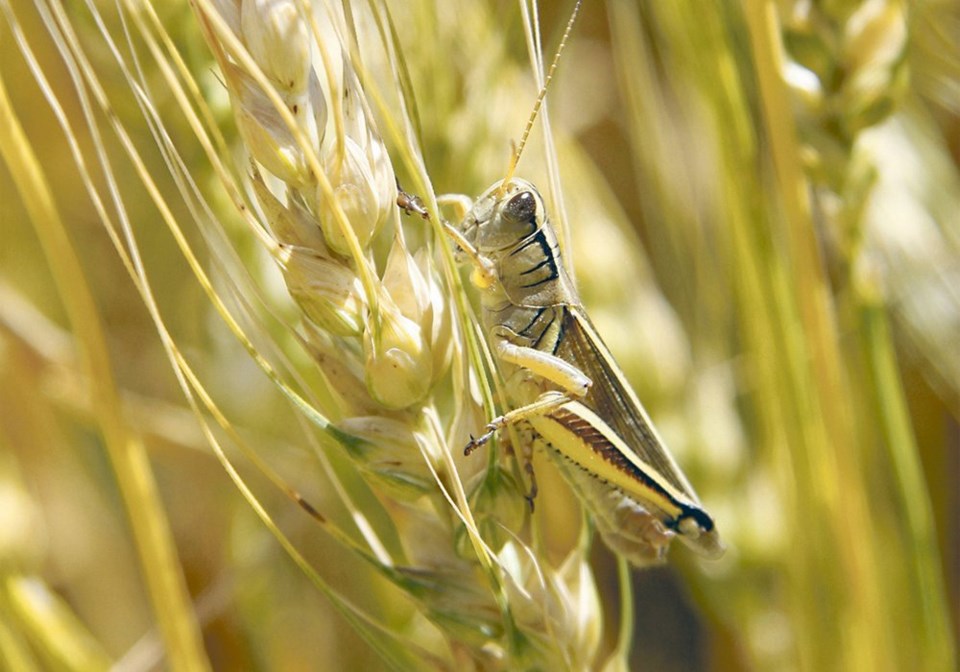Twospotted spider mites have become noticeable along the edges of some soybean fields in the Eastern, Interlake and Central regions. Some spot spraying along the outside rounds has occurred in the Eastern region. Some high levels of larvae of bertha armyworm have been found in some canola fields near Sidney and south of Gladstone in the Central region. There have been reports of spraying for Lygus bugs in confection sunflowers in the Eastern region. Aphids have been noticed in some of the small grain cereals, but so have natural enemies such as lady beetles, and aphid mummies (evidence of parasitized aphids) are noticeable in some fields. There have been no reports of spraying for aphids in cereals,
Spider mite populations are often higher when conditions have been hot and dry for a sustained period of time, and are often first noticed near field edges. Frequent rain and cool weather can reduce mite populations in soybeans by facilitating the development of fungi that infect the spider mites. Spider mites are small (about 0.4 mm), so tapping the leaves over something that the mites can easily be seen on may help in determining their presence and levels. The stages of soybeans that are most susceptible to spider mites are the R4 (full pod) through R5 (beginning seed – when seeds are filling) stages. Once the soybeans reach R6 (full seed or green bean stage) the feeding from spider mites will have less impact on yield.
The population of adult moths of bertha armyworms are being monitored during the flight and egg-laying period in June and July using pheromone-baited traps. Bertha armyworms have been found in all 83 traps that counts were reported from so far. Cumulative counts remained in the low risk category in most traps (75 of the 83 traps), however traps near Makaroff and Durban in the Northwest region, Kenton and Whitehead in the Southwest region, Carman in the Central region, and Broad Valley, Lundar, and Pleasant Home in the Interlake region have increased into the uncertain risk category. The highest cumulative trap count so far is 506 from a trap near Makaroff in the Northwest region.
(Government of Manitoba news release)



